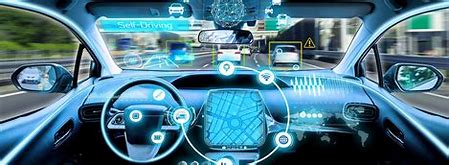AI in automobiles
The Role of Artificial Intelligence in Revolutionizing the Automobile Industry
In the past decade, artificial intelligence (AI) has seamlessly woven itself into the fabric of various industries, transforming and optimizing operations. One sector where AI’s impact is especially profound is the automotive industry. As the quest for safer, more efficient, and innovative transportation intensifies, AI emerges as a critical component, steering the future of automobiles.
1. Introduction to AI in Automobiles
Artificial intelligence, with its ability to analyze vast amounts of data and make autonomous decisions, is perfectly suited to address the complexities of modern-day driving. The integration of AI in automobiles encompasses various applications, from advanced driver assistance systems (ADAS) to autonomous vehicles, promising to redefine our relationship with transportation.
2. Advanced Driver Assistance Systems (ADAS)
ADAS represents one of the earliest implementations of AI in cars. These systems enhance vehicle safety and driver comfort by automating and improving vehicle functions. Key components of ADAS include:
- Adaptive Cruise Control (ACC): Using AI algorithms, ACC adjusts the vehicle’s speed to maintain a safe distance from the vehicle ahead, enhancing safety and reducing driver fatigue.
- Lane Keeping Assist (LKA): AI-powered cameras and sensors detect lane markings and gently steer the vehicle to ensure it stays within its lane.
- Automatic Emergency Braking (AEB): Leveraging AI, AEB systems detect potential collisions and apply the brakes automatically, reducing the likelihood of accidents.
3. Autonomous Vehicles: The Future of Driving
Perhaps the most groundbreaking application of AI in the automotive industry is the development of autonomous or self-driving cars. Companies like Tesla, Waymo, and Uber are at the forefront of this technological revolution. The core AI technologies enabling autonomous driving include:
- Computer Vision: Autonomous vehicles rely on computer vision to interpret and understand the environment. AI algorithms process data from cameras, lidar, and radar sensors to identify objects, pedestrians, and other vehicles.
- Machine Learning: Machine learning models are trained on vast datasets of driving scenarios, enabling the vehicle to make informed decisions in real time. These models improve over time as they learn from new data.
- Deep Learning: Deep learning networks, particularly convolutional neural networks (CNNs), play a crucial role in object detection and scene understanding, allowing autonomous vehicles to navigate complex environments.

4. AI in Vehicle Manufacturing and Maintenance
AI is not limited to enhancing the driving experience; it also plays a significant role in the manufacturing and maintenance of vehicles. In manufacturing, AI-driven robots and automation systems improve production efficiency, reduce errors, and ensure consistent quality. Predictive maintenance, powered by AI, enables real-time monitoring of vehicle components, predicting failures before they occur, and minimizing downtime.
5. AI and Smart Cities: The Road to Connectivity
The future of AI in automobiles extends beyond individual vehicles to encompass smart city infrastructure. Smart cities leverage AI to create interconnected transportation networks, optimizing traffic flow, reducing congestion, and improving overall urban mobility. Key components of AI-enabled smart cities include:
- Traffic Management Systems: AI algorithms analyze traffic patterns and adjust traffic signals in real time, reducing congestion and improving travel times.
- Vehicle-to-Infrastructure (V2I) Communication: AI facilitates communication between vehicles and city infrastructure, such as traffic lights and parking systems, enhancing safety and efficiency.
- Shared Mobility Solutions: AI powers ride-sharing and carpooling platforms, optimizing routes and matching passengers for efficient and cost-effective transportation.

6. Challenges and Ethical Considerations
While AI holds immense potential in revolutionizing the automotive industry, it also presents challenges and ethical considerations. Ensuring the safety and reliability of AI systems in vehicles is paramount, as even minor errors can have catastrophic consequences. Moreover, ethical dilemmas, such as decision-making in critical situations (e.g., the “trolley problem”), require careful consideration and transparency.
7. The Road Ahead: AI and the Future of Mobility
The journey of AI in the automotive industry is just beginning. As technology continues to evolve, we can expect even more advanced applications, from fully autonomous vehicles to AI-powered transportation networks. The future of mobility promises to be safer, more efficient, and more sustainable, thanks to the relentless advancements in AI.
EV cars and environment – A New Way Forward | Automotive and Home Advice & Review
Share this content:






Post Comment